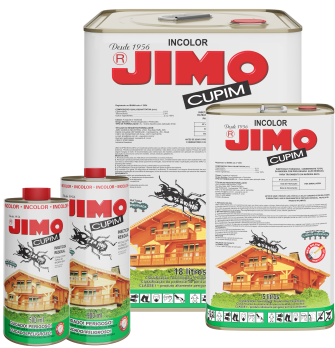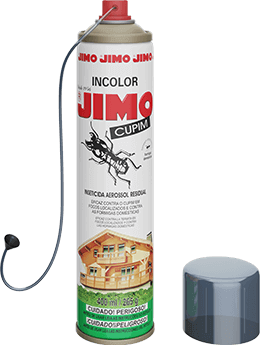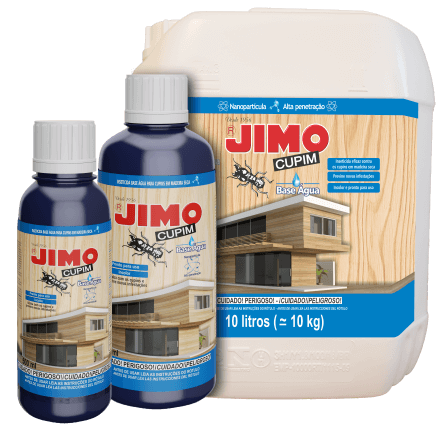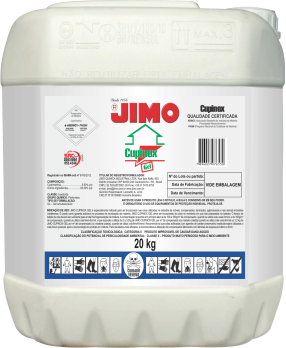
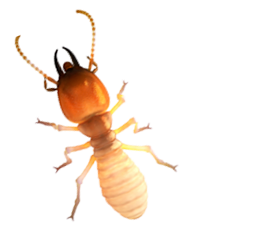 Termites are organized in a caste society, where each member has a specific role in attacking property and goods, whether movable or immovable. They can be found almost everywhere in the world but are mainly distributed in tropical and subtropical regions. The basic food source of these insects is cellulosic material, which in general terms is digested with the aid of intestinal symbiotic microorganisms.
Termites are organized in a caste society, where each member has a specific role in attacking property and goods, whether movable or immovable. They can be found almost everywhere in the world but are mainly distributed in tropical and subtropical regions. The basic food source of these insects is cellulosic material, which in general terms is digested with the aid of intestinal symbiotic microorganisms.
They play an important ecological role, functioning as primary decomposers and consumers, helping in soil aeration and nutrient distribution. There is a relatively small number of species which are considered pests when compared to the total number of species.
Termites are eusocial insects. In colonies, individuals have different functions according to the caste they occupy, and morphologies adapted to these functions.
Queen and king: They are the key elements of any colony. Their only function is to mate and lay eggs. Other termites feed and provide safety to the royal couple. The queen lives 25 to 50 years.
Eggs: Thousands are produced by the queen every year, and are incubated for about two weeks under the care of worker termites.
Mating: After the short flight, the breeders lose their wings. Those who survive predators, begin the mating process for copulation with their partner.
Resurgence: The mating pair burrows in the wood, starting their own colony as king and queen. The life cycle is repeated when the new queen lays her eggs, which will become nymphs, soldiers, workers and breeders.
Flight: All breeding adults leave the colony simultaneously, preferably in the spring and fall. The workers help them move through the tunnels to the exits. Lousy fliers, these breeders glide for a few meters and fall to the ground quickly.
Nymphs: They take a certain position in the castes after a series of stages of growth.
Castes:
Breeders: Develop sexual organs and wings. Their eyes become functional. On nature's signal, these termites leave the colony swarming to start new attack outbreaks.
Secondary breeders: This group provides, under emergency conditions, a replacement for the king and queen if they die.
Workers: Sterile and blind, worker termites are eager for cellulose, the basic food for the entire colony. Some also work for the safety of the queen, her eggs and nymphs. They work 24 hours a day, piercing the interior of woods.
Soldiers: In its final stage of growth they acquire a head shield as well as large and strong jaws. They are genetically programmed to defend the colony from enemies, especially ants.
Dry wood termites take residence within pieces of wood with low moisture content. They are common in parts of roofs, jambs, window frames, furniture, etc. Although these termites' colony is not very large, an attack can cause serious damage, since it is only possible to detect it when the interior of a piece is already in an advanced state of destruction. Termites build galleries within wood, through where they circulate and produce small oval pellets, their feces, which they deposit in a chamber near the surface of the wood and, from time to time, discharge out of the attacked piece, to clean the galleries.
Habits of dry wood termites: The attacks on houses may be limited to a single or a couple of rooms or reach the whole house. Large infestations are only noticed long after the initial infestation. From September to December, winged termites leave their shelters and fly until they detach their wings, which are very fragile. Free from the wings, the insects form new colonies in the jambs of doors and windows, ceilings, furniture, etc. Termites are light averse: they do not appear under light and move in galleries within the hollow timber. Only the inside of wood is damaged; by hitting a severely attacked wood we may perceive a hollow sound. Inside the wood, termites make longitudinal galleries; at certain intervals they build small channels perpendicular to the galleries that open to the outside, through which they loose droppings. Fecal waste is easily perceived: they are dry, very hard and about 1 mm in diameter.
Subterranean termite: The subterranean termite is an urban pest endowed with a high destructive power, consuming large costs to control and repair damaged structures and materials. Subterranean termites feed on wood and other cellulose containing materials and need moisture to survive. This is why the colony is usually established on the ground, that provides the needed moisture for the maintenance of its biological cycle. In buildings, wood can be in direct contact with the ground or not. In masonry buildings, termites build their access tubes through the foundations, walls, water and light pipes, box caisson, etc., while the core of the colony remains on the ground. Workers travel between the building and the ground to bring food to the colony. Workers return to the ground at least once every 24 hours to have access to moisture, because otherwise, they would not survive. Mud tubes are an indication of infestation by subterranean termites. When crossing concrete or similar materials to reach wood or other food sources, termites build these tubes as shelters.
Arboreal termite: This species destroys hard or soft wood, dry or wet, worked or not, and prefer sapwood to heartwood. It attacks wood buildings, wooden posts and fence posts. It is common to find nests in trees near homes that have problems with attacks by this species, but the communication tunnels cannot always be seen, since the connection can happen through the ground.
Field termite: Field termites or mound-building termites are insects that commonly infest pastures and live in nests that have a visible portion over the ground surface, called "nests" or "mounds".
Borers: Borers are small beetles that feed on wood (cellulose material) from the larval stage until early adulthood, a period that can last from one to four weeks, leaving afterwards the infested piece. Unlike termites, they are not social insects, acting alone, however this does not prevent several borers to occupy the same piece of wood. The damage caused by borers are of smaller proportions, that is why their presence in wood is almost imperceptible.





















